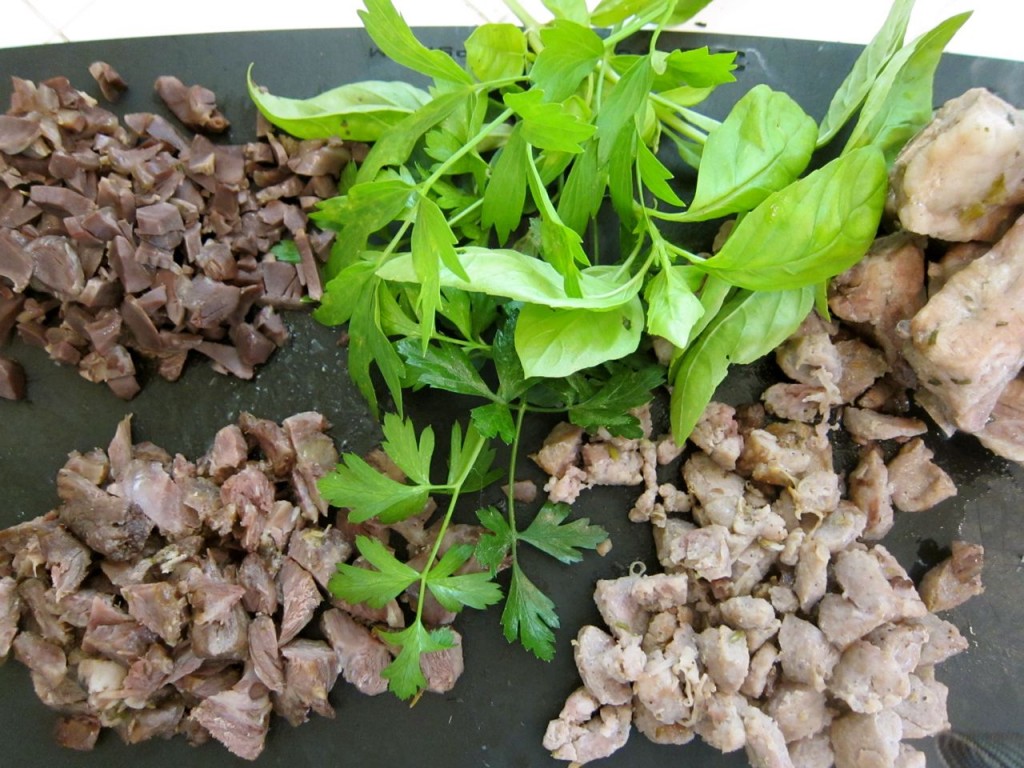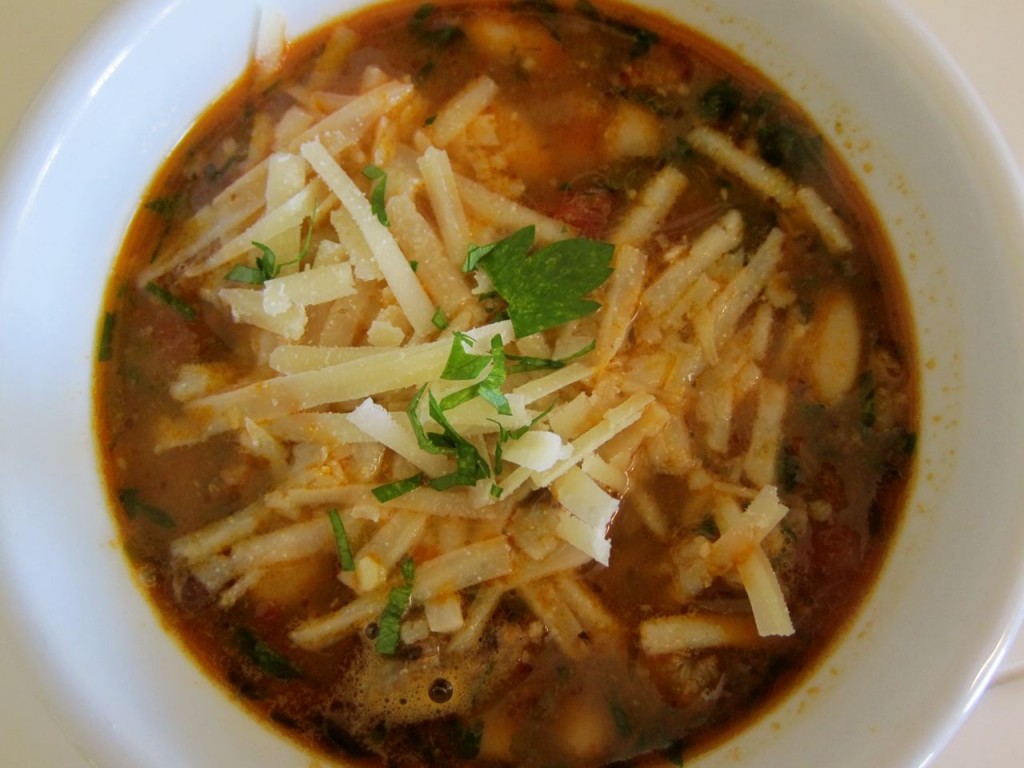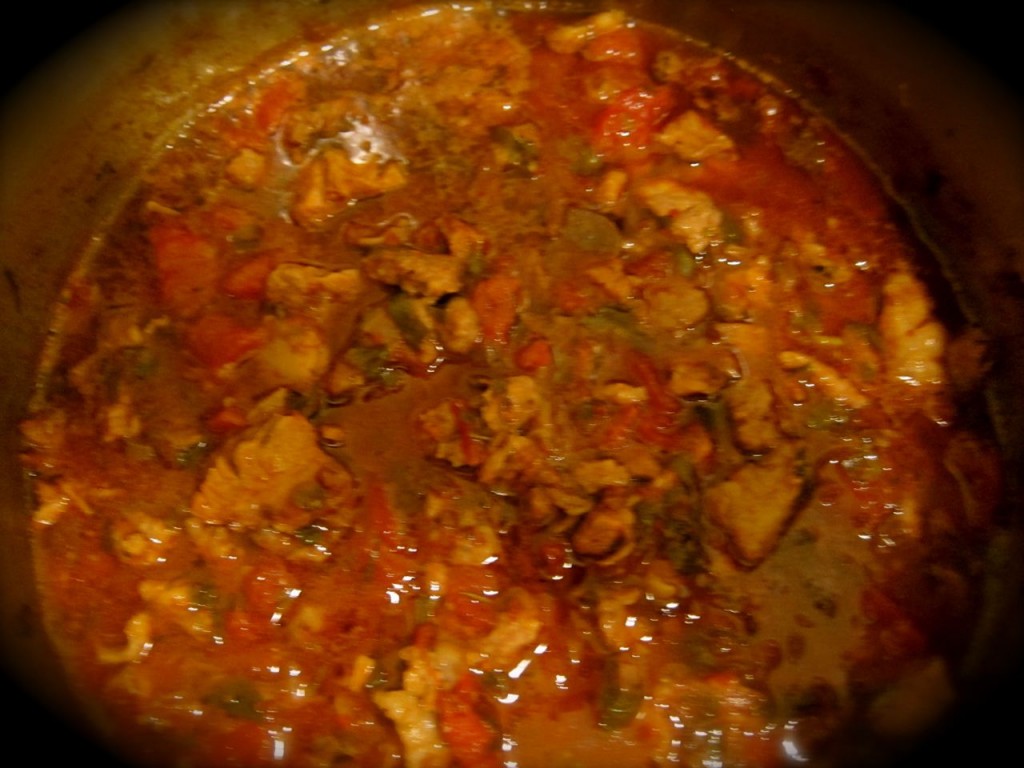Real Food : Bolognese or Ragu
Bolo Ragu
Serves 4
Another spectacular autumn morning in the northwest. Frost twinkles on the field, streaks of golden sunlight peak through fog, and apples engorged with juice hang precariously to their stems. Every fall my recipe mind thinks meaty sauces, wild mushrooms, roasted winter squash and rib-sticking soups. Is it a primal compulsion to harvest what’s left in the garden and replenish the woodpile in preparation for long winters?
Who knows, but almost every day I find myself dreaming about European farms of old where cooks used every ripe, slaughtered or leftover food from the week to make nourishing soups, stews and belly-filling sauces…Real Food.
Four generations later, obviously far removed from those circumstances I begin my fall cooking ritual and spend hours improvising classic recipes with the last of the garden, leftovers in the refrigerator or freezer and supplements from the pantry shelves.
Last week I bought a package of gorgeous oxtails, six large pieces and seven tiny ones. The larger pieces would become Braised Oxtails over Polenta (next posting), enough for two evenings. How about those little pieces? What would my imaginary Italian farm cook do with them? In the freezer I spotted two uncooked Italian sausages, a small container of chicken gizzards, four small pork short ribs and a stock bag with frozen fennel stems, onion pieces and two carrots. Outside In the herb garden basil, rosemary, oregano, flat leaf parsley, thyme and lovage, limp from morning frosts, were begging to be picked.

From the top left cooked gizzards, just picked herbs, cooked short ribs, sausage and oxtail, picked off the bone.
Bolognese!
After 30 minutes on the Internet looking at classic Bolognese and Ragu recipes I learned that the terms are almost indistinguishable although some Bolognese recipes call for cream or milk. Another stated, “Bolognese should always be consumed the day it is cooked” (absurd).
Before I knew it, ingredients were lined up on the counter and I was cooking. The challenge was to create the tastes of leftover meats using raw meats. If the oxtails were pressure-cooked first, including the small pieces that I wanted to use in the sauce, I could pick the meat off the small bones and bring that distinct flavor to the sauce.
Next, using the contents of the stock bag and the stems from fresh herbs I made a stock and cooked the gizzards and short ribs in it. The sausage was cooked by itself on high heat to produce residue in the pan. A little cooked stock poured over it created a flavorful demi glace to add to the sauce.
Cooked meats and herbs were chopped, the stock was strained and tomato and other ingredients were added and the sauce simmered on the back of the stove for enough time to produce a rich, delicious sauce. Bolognese or Ragu, it was Real Food.
Hints
- At first glance the ingredient list looks overwhelming, but with the exception of the meats, everything listed is always in my pantry.
- Most Bolognese and Ragu recipes call for canned tomatoes and tomato paste. The Tomato, Roasted Pepper and Olive pesto listed below was made by processing 3/4 cup canned roasted red bell peppers, 3/4 cup strained canned tomatoes and about a dozen pitted Calamata olives into a paste.
- Marjoram or Italian oregano can be used instead of rosemary.
- Despite what one Internet recipe warned, the leftover sauce and leftover chicken stock combined with canned (strained) Cannellini beans made an awesome soup the next day.
Ingredients
2 tbs. extra virgin olive oil
1/2# beef stew meat (I used the oxtails)
1 frozen stock bag or: 1 carrot, ½ large yellow onion, 1 clove garlic, herb stems, 1 celery stalk, 1 tbs. ground fennel or a pinch of fennel seeds.
1# pork short ribs
1/2# Italian sausage (links work because they are easy to chop)
1/4# whole chicken gizzards or dark meat chicken, skinned and diced
1 large yellow onion, peeled and chopped
2 cloves fresh garlic, peeled and chopped
1 carrot, peeled and chopped
1 stalk celery, chopped
Leaves from 1 rosemary (oregano or marjoram) sprig, removed and finely chopped
Leaves from 1 thyme sprig
1 tbs. ground fennel
1, 14.5oz can diced tomatoes
1/3 cup tomato paste or Roasted Pepper, Tomato and Olive pesto (see Hint #2)
1/2 cup red wine
1/4 cup balsamic vinegar
Leaves from 3 sprigs large leaf basil
1/8 tsp. dehydrated red pepper flakes or a few drops of Chinese chili paste
Salt and pepper to taste
1 cup coarsely grated Parmegiano Reggiano
Leaves from 2 sprigs Italian parsley, removed and chopped
Tagliatelle pasta, cooked
Procedure
- Heat olive oil in a skillet. Brown the stew meat, short ribs, sausage and chicken meat if you are using that. Do not brown gizzards. Set the browned meats/chicken aside.
- Put half of the chopped onion, 1/3 of the chopped garlic, the whole carrot and half of the chopped celery into the skillet. Cook over medium low heat until the onion is softened. Transfer the vegetables to a 4-quart pot.
- Add the browned short ribs and the gizzards if you are using them, and 2 quarts of water to the stockpot. Bring the stock to a low but steady boil. Cook for 45 minutes or until the short ribs are tender enough to scrape off the bones easily. The stock should have reduced by half.
- Strain the contents of the pot, saving the stock. Using tongs, pick out the gizzards and short ribs and set aside. Discard the cooked vegetables. Cut the stew meat into small pieces. Scrape the pork and fat from the rib bones and chop. Chop the gizzards and the sausage.
- Pour the strained stock into the large pot and add the remaining onion, garlic, chopped carrot, celery, rosemary, thyme, fennel, canned tomato, wine, vinegar and red pepper or chili paste. Add the various meats. Chop half of the basil leaves and add them.
- Bring the sauce to a low simmer and cook, uncovered for at least an hour. Taste and correct the seasoning with salt and pepper if necessary.
- Fifteen minutes before the sauce is done chop the remaining basil leaves and add them to the sauce.
- At this point the sauce can be taken off heat and held for an hour or more before reheating and serving.
- To Serve: Ladle sauce over cooked pasta, sprinkle with chopped parsley and coarsely grated Parmesan.

